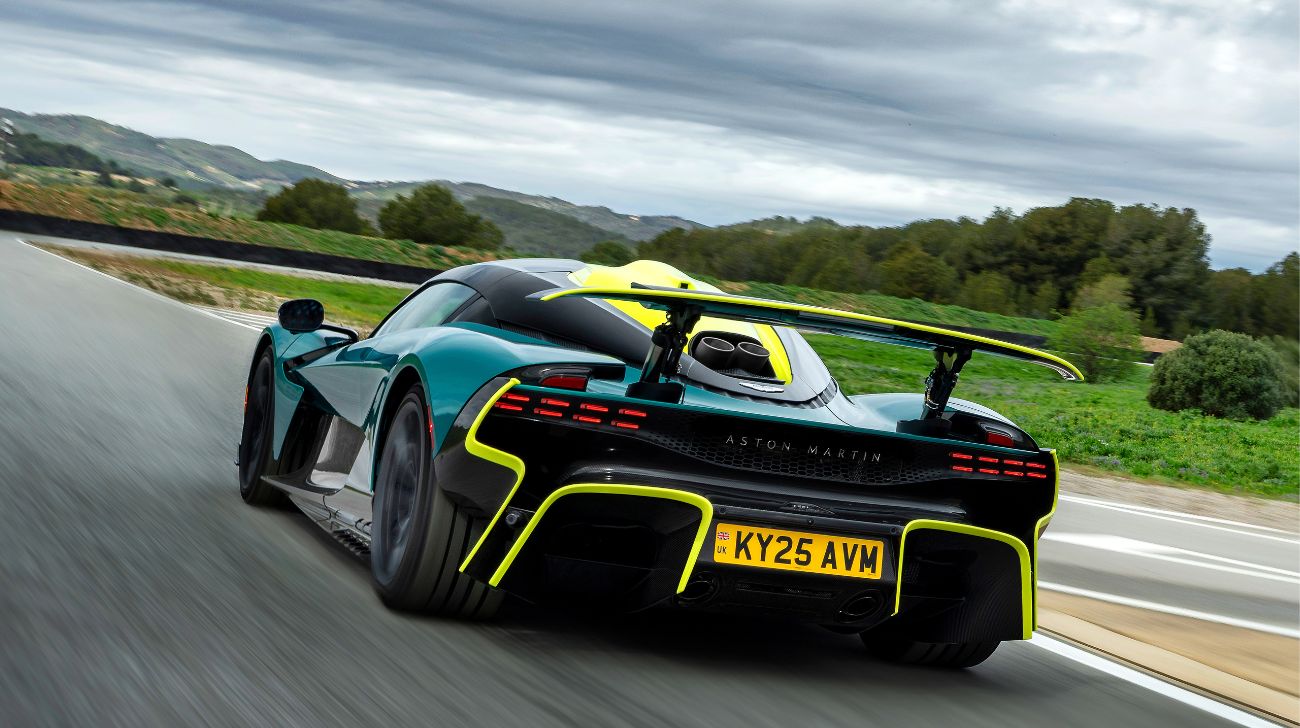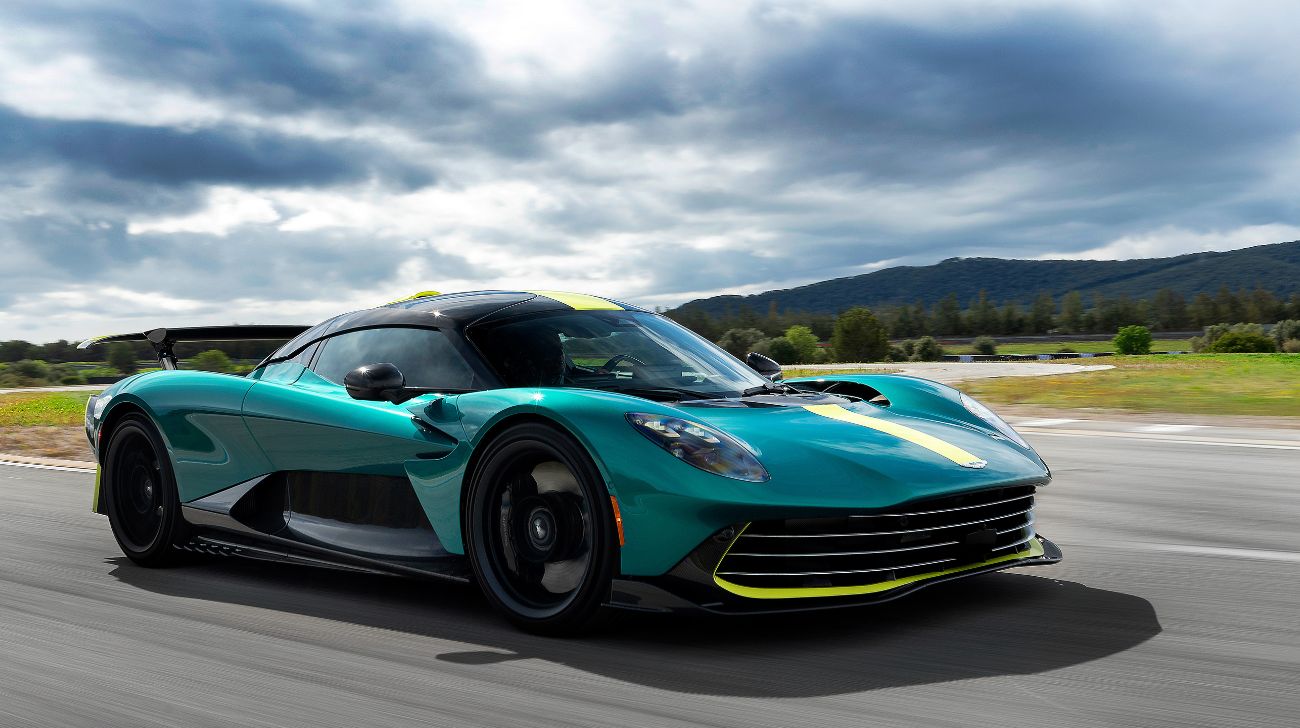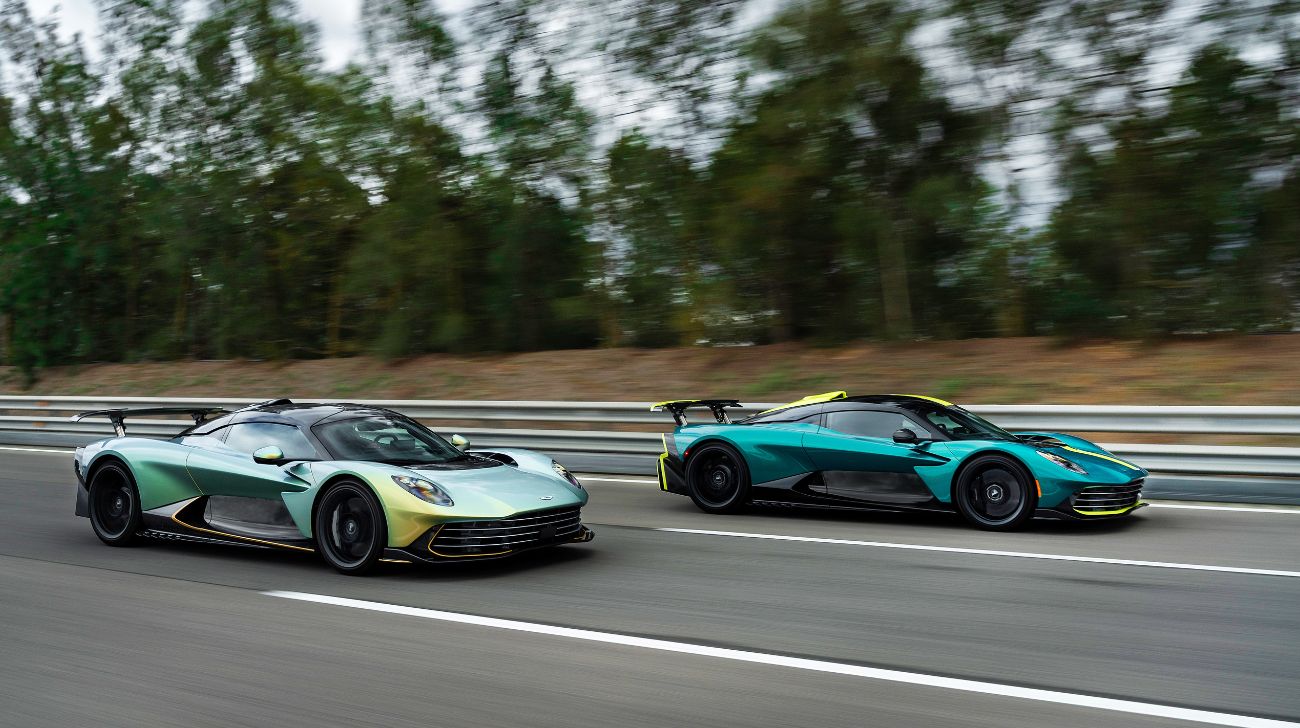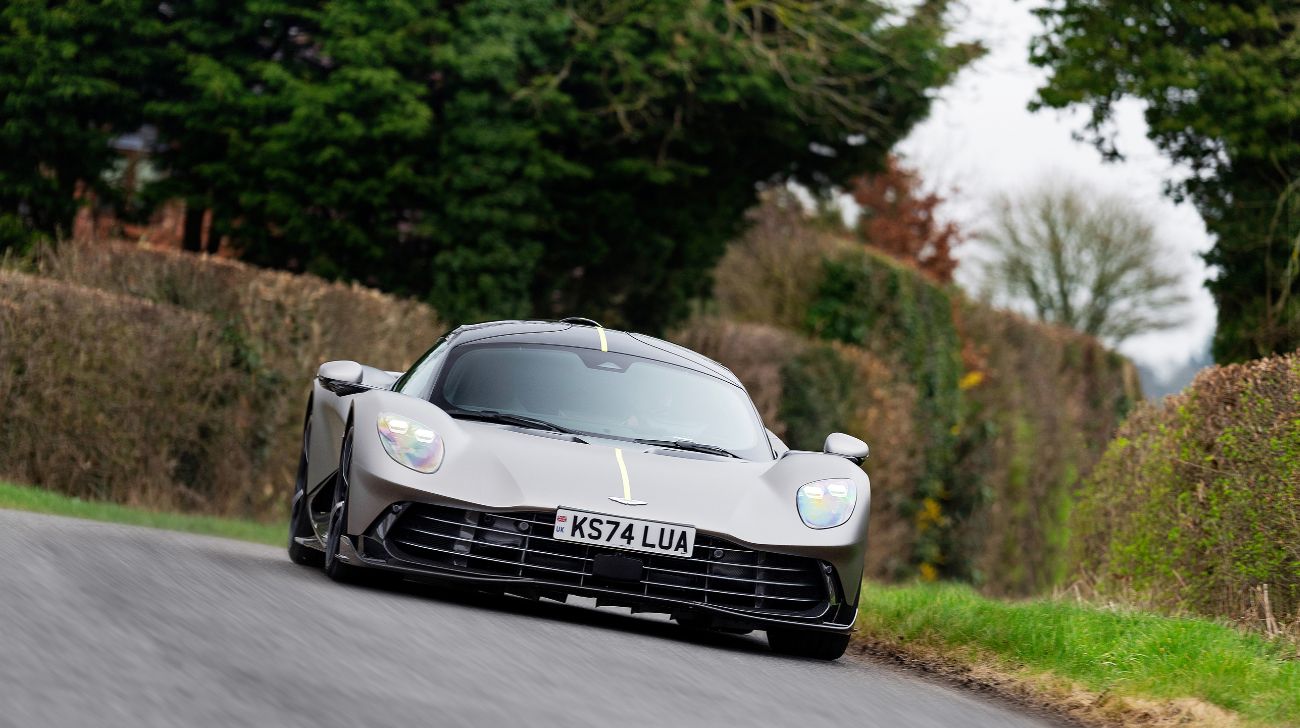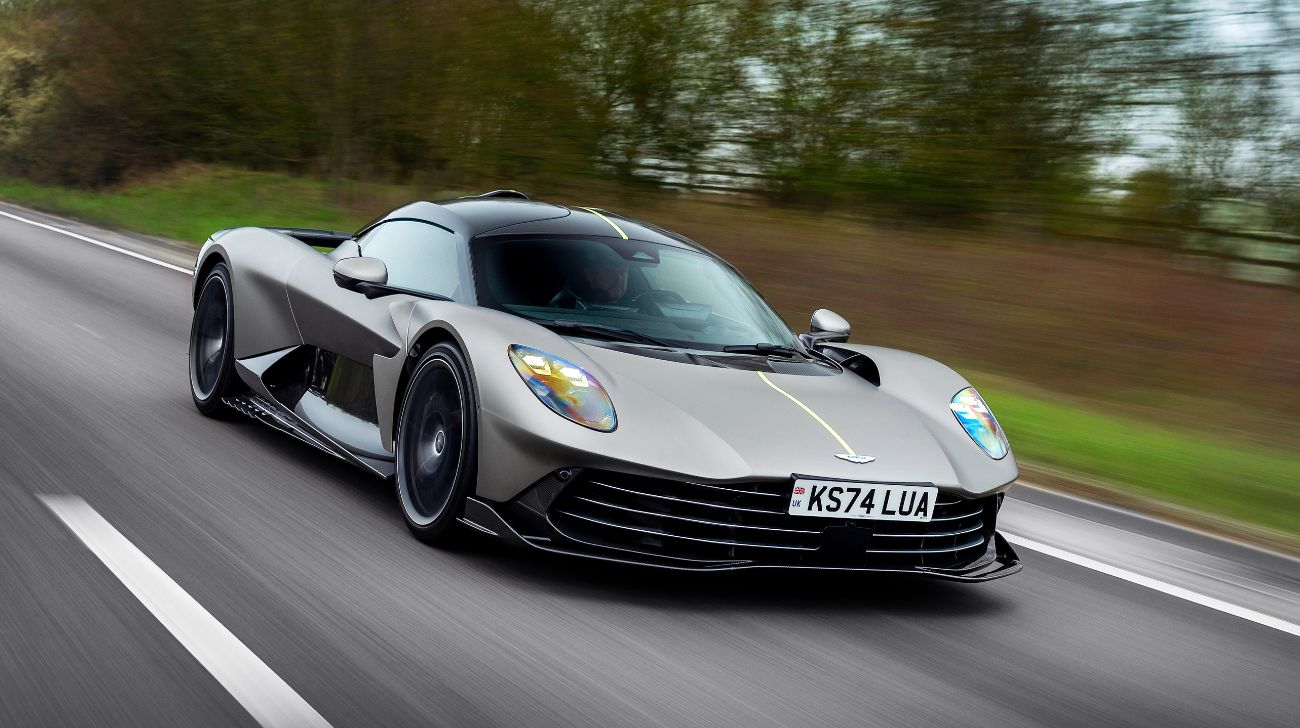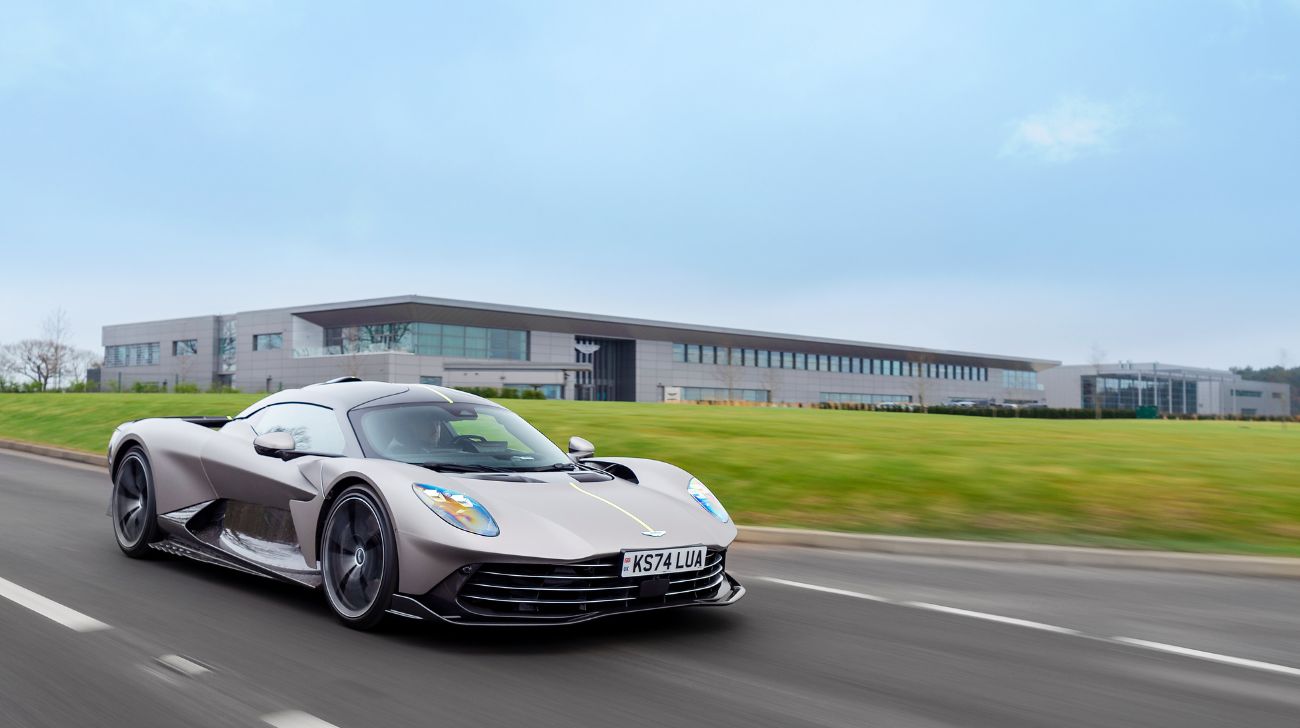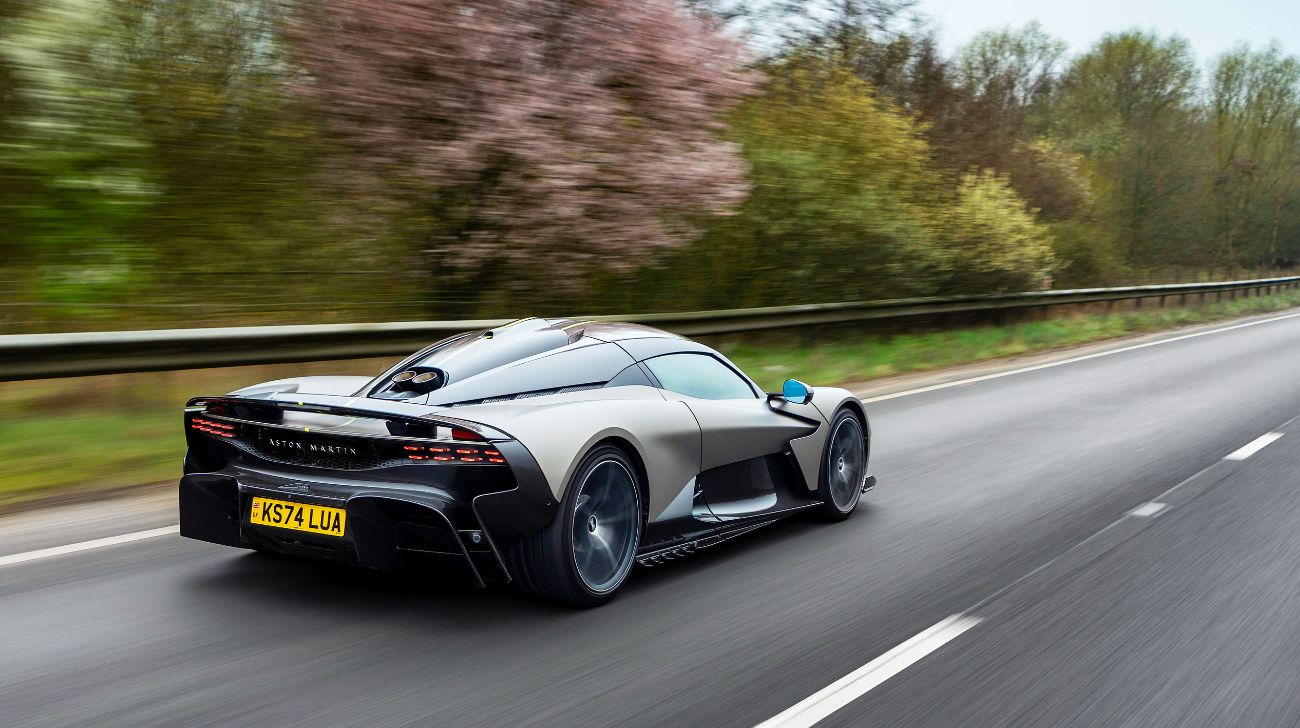Aston Martin has unveiled new images of the highly anticipated Valhalla, captured both on-road in the UK and on the IDIADA track in Spain. As the brand’s first series-production mid-engine supercar, the Valhalla is undergoing its final validation phase before production begins in Q2 2025. The car is set to have a limited 999 units globally.
Testing
Aston Martin engineers and three-time Le Mans class winner Darren Turner are rigorously testing the Valhalla at the IDIADA proving ground in Spain. These trials include high-speed handling, wet and dry track performance, final aerodynamics, braking, and steering calibration. Simultaneously, another prototype is fine-tuned on UK roads, ensuring optimal damper calibration for everyday driving.
Performance
The Valhalla features an electrified 1,063 bhp hybrid powertrain, combining a 4.0-litre twin-turbo flat-plane crank V8 engine with three E-motors delivering an additional 244 bhp.
Key Performance Highlights:
-
Maximum Speed: 350 kmph (electronically limited)
-
0-100 kmph: 2.5 seconds
-
Torque: 1,100Nm
-
Transmission: All-new 8-speed Dual Clutch Transmission (DCT) with E-diff
-
AWD Capability: Front axle twin motors enable torque vectoring for enhanced handling
Features & Technology
The Valhalla marks several milestones for Aston Martin:
-
First Plug-In Hybrid Supercar
-
First mid-engine series production model
-
First with an all-new EV driving range
-
First Aston Martin to feature a high-performance V8
Apart from this, with Formula 1-inspired engineering, the Valhalla integrates active aerodynamics and an advanced control system to deliver a supercar experience, whether on the racetrack or on public roads.
Conclusion
Even after years of delays, the Valhalla is set to become one of the most iconic Aston Martins ever made, equipped with only the highest-quality equipment. The car does not compete against anything in particular, but for the sake of argument, it can be compared to the Mercedes-AMG ONE and the Ferrari F50. Which one would you pick?

